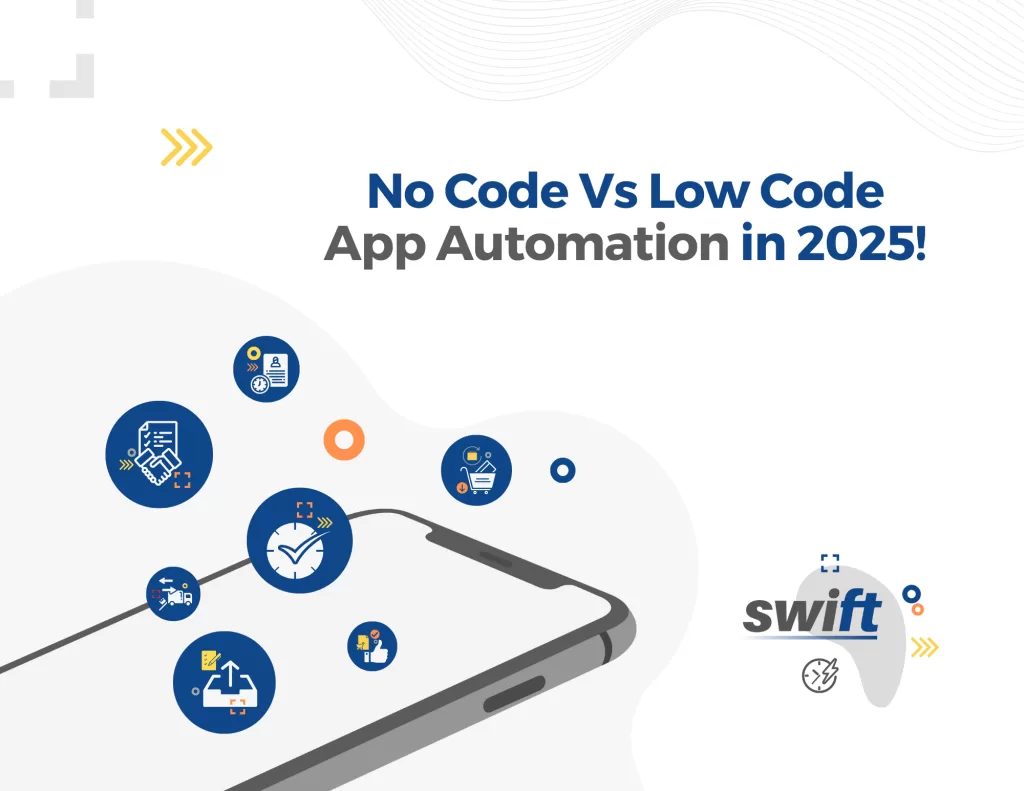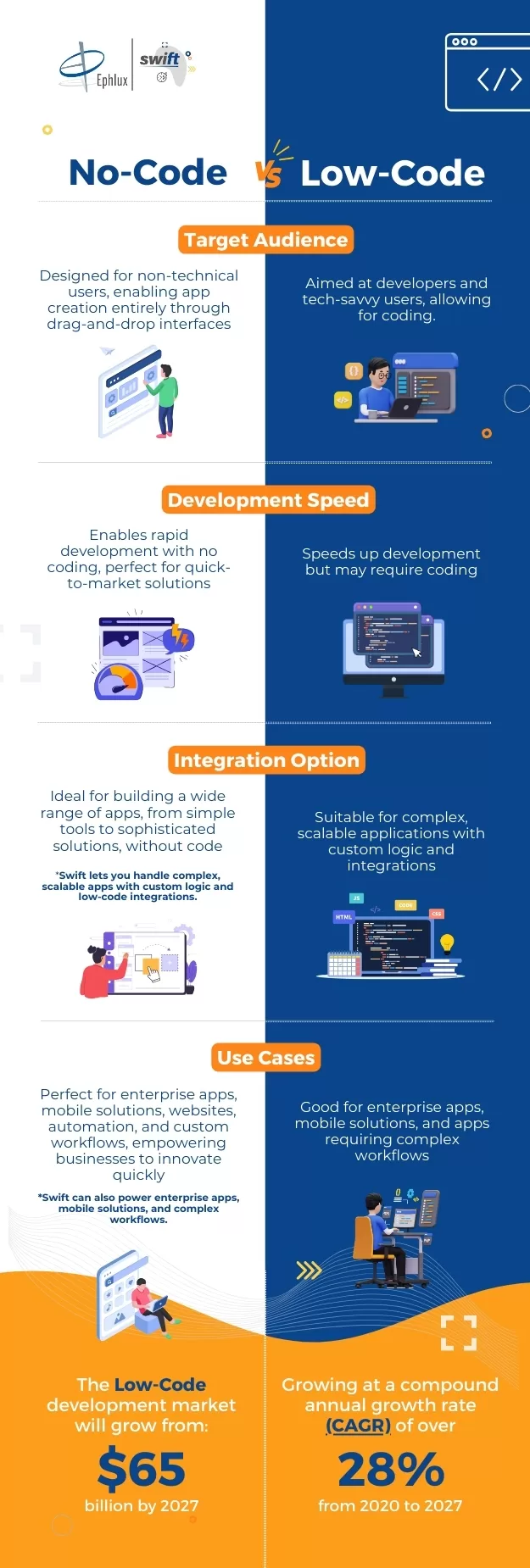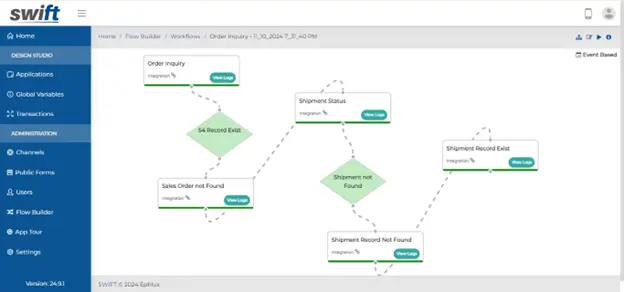

No Code Vs Low Code App Development
Have you ever dreamed of turning your ideas into apps without needing to learn coding? In 2025, that dream is becoming a reality!
With the rise of No Code and low-code platforms, anyone—from entrepreneurs to everyday users—can bring their visions to life quickly and affordably. Curious to learn how these tools are reshaping the app development landscape?
This article explores the differences between no-code and low-code app development, explores market growth trends, and shows how these platforms are changing the way we create applications.
Understanding No Code vs. Low Code
No Code Development refers to platforms that allow users to create applications without any coding knowledge. These platforms often provide drag-and-drop interfaces and pre-built templates, making them accessible to anyone, regardless of technical background. The goal is to allow business users—often called “citizen developers”—to rapidly build functional applications that meet specific business needs.
Low Code Development, on the other hand, requires some degree of coding knowledge but significantly reduces the amount of code needed. It provides more flexibility and customization options than No-Code platforms. Developers can use visual interfaces to streamline the development process while still having the ability to write code when necessary.
Key Differences

Market Growth trends
The No Code and Low Code development market has been experiencing explosive growth. According to recent reports, the global market size for Low Code development platforms is expected to reach $65 billion by 2027, growing at a compound annual growth rate (CAGR) of over 28% from 2020 to 2027.
The No-Code segment is also witnessing similar growth dynamics as businesses seek agility in application development.
Several factors are driving this growth:
- Increased Demand for Digital Transformation: Organizations are looking for ways to digitize their operations quickly without relying solely on IT departments.
- Shortage of Skilled Developers: With a growing demand for software, there is a significant shortage of qualified developers, making No Code and Low Code solutions attractive alternatives.
- Empowerment of Business Users: Companies are recognizing the value of empowering business users to create their own applications tailored to their specific needs.
Ephlux Swift Platform: A Game Changer
Ephlux’s Swift platform exemplifies the potential of No Code and Low Code development in 2024.
Swift is designed specifically for JD Edwards Business Analysts, allowing them to create highly functional mobile, tablet, scanner, and web apps without writing a single line of code. This capability aligns perfectly with the increasing demand for agile app development.
Key Features of Swift
- User-Friendly Interface: Swift enables business analysts to design and launch applications quickly using intuitive drag-and-drop functionality.
- Seamless Integration: The platform integrates effortlessly with JD Edwards ERP systems and third-party applications, ensuring that users can leverage existing data and processes without disruption.

- Rapid Deployment: Applications can be built and deployed in days rather than months, significantly reducing time-to-market.
- No Additional Maintenance Required: Swift applications do not require changes to existing JD Edwards applications, minimizing maintenance overhead.
Case Study: Pan American Silver - Revamping Inventory Operations

Overview
Pan American Silver needed to make their inventory transfers more efficient and to provide real-time visibility into stock availability across various locations. The goal was to eliminate the manual processes that led to errors, delays, and hindered decision-making, impacting operational efficiency and customer satisfaction.
At Pan American Silver, the goal was to find a modern scanner and mobility solution seamlessly integrated with their JD Edwards ERP system.
Problem
The company needed a better way to manage inventory transfers and gain real-time visibility into stock across various locations. Manual processes were causing errors and delays, impacting operational efficiency and customer satisfaction.
Solution
Leveraging Swift’s low code/no code platform, Pan American Silver swiftly deployed Mobile Inventory Transfer and Inventory Availability applications. These solutions transformed their inventory management process by:
- Accelerated Inventory Transfer: Implementing the Inventory Transfer application reduced transfer times enhancing operational efficiency and reducing bottlenecks.
- Real-time Inventory Visibility: The Inventory Availability application provided instant insights into inventory levels across locations, enabling proactive decision-making and minimizing stockouts.
- Enhanced Accuracy and Compliance: Swift’s applications improved inventory data accuracy and compliance with management protocols, resulting in reduction in errors and discrepancies.
- Cost Savings: Swift’s rapid implementation of inventory applications led to cost savings through reduced manual efforts, optimized inventory utilization, and minimized stockouts.
Result
By teaming up with Swift, Pan American Silver transformed their inventory management processes, achieving greater efficiency, accuracy, and cost-effectiveness. Leveraging Swift’s low code-no code app automation solutions, Pan American Silver streamlined logistics, optimized operations, and promptly met customer demands. This successful integration of Swift’s ERP technology demonstrates the significant impact of innovative solutions on business operations.
The Future of App Automation: 2025 and Beyond
As we approach 2025, the distinction between no-code and low-code platforms is becoming less clear. These tools are no longer just for small projects or prototypes—they are transforming how businesses operate across industries. The flexibility of low code combined with the accessibility of no code is empowering non-technical users and developers alike to create, innovate, and launch applications faster than ever before.
Platforms like Swift are leading this shift by offering both no-code simplicity and the flexibility of low-code, allowing organizations to rapidly prototype, scale, and deploy apps while also meeting more complex development needs as they grow.
How Swift No-Code Automation Platform Helps Enterprises
Ephlux Swift is not just another app builder; it’s a game-changing platform that enables enterprises to digitize faster. From automating business processes to creating custom apps with ease, Swift is helping businesses get apps into production quickly—without the usual hurdles of traditional software development.
Conclusion: Embrace the Future with No-Code & Low-Code
In conclusion, the debate between no-code vs low-code is about more than just technology—it’s about empowering businesses to innovate, adapt, and succeed in an increasingly digital-first world. With platforms like Swift, businesses can reduce development time, cut costs, and empower both business users and technical teams to meet their app creation needs.
The future of app development is bright. No-code simplicity allows anyone to create apps, while low-code flexibility enables developers to fine-tune and expand functionality when needed. For organizations looking to thrive in 2025 and beyond, embracing these tools will be key to staying competitive, responsive, and agile in today’s fast-moving digital landscape.
FAQs
No-Code Development:
- Who it’s for: Non-technical users (like business analysts or office admins) who want to create apps without any coding.
- Customization: Limited options. You use pre-made templates and drag-and-drop tools to build your app.
- Speed: Fast and easy to create simple apps, ideal for quick projects.
Low-Code Development:
- Who it’s for: Developers or tech-savvy users who are okay with writing some code for more advanced features.
- Customization: More flexible. You can add custom scripts and plugins to personalize your app.
- Speed: Faster than traditional coding but takes more time to learn and build compared to no-code platforms.
Why No-Code is Considered Better
No-code platforms are often seen as superior for certain use cases because they:
- Empower Non-Technical Users: They allow people without programming knowledge to build functional apps, making app development accessible to a wider range of people within an organization.
- Reduce Development Time: With simple drag-and-drop interfaces and pre-built templates, no-code platforms speed up the development process, helping businesses quickly respond to new needs.
- Lower Costs: By reducing the need for expensive developers, no-code platforms are a more affordable option, especially for smaller organizations or teams with limited budgets.
However, low-code solutions like Swift also offer strong benefits. Swift blends the simplicity of no-code with the added flexibility of low-code, allowing users to build apps quickly while also offering customization options for more complex needs.
Difference Between Low-Code and Codeless
While “codeless” and “no-code” are often used interchangeably, they can have slightly different focuses:
- Codeless Development: Refers to platforms that completely eliminate the need for any coding. These platforms are designed to let users build applications (often for automation or integration tasks) without writing a single line of code. It’s essentially “zero-code.”
- Low-Code Development: While low-code platforms allow you to build apps with minimal coding, they still provide the option to write code when more customization or advanced functionality is needed. Low-code is more flexible and powerful for users who want to go beyond the limitations of purely codeless tools.
Swift Example:
Swift is a good example of a low-code platform that offers the best of both worlds. Users can create applications codelessly, using visual tools and pre-built components. However, when the need arises for more complex features or custom logic, they can easily write code to extend the functionality. This makes Swift ideal for projects that require both ease of use and depth of customization.
When No-Code Platforms Are Best Used:
- Rapid Prototyping: Ideal for quickly building proof-of-concept apps or MVPs (Minimum Viable Products) with limited resources.
- Simple Applications: Great for creating straightforward apps that don’t require complex features or integrations.
- Business Process Automation: Perfect for automating repetitive tasks or workflows, especially when technical expertise is not available.
While no-code platforms excel in these scenarios, low-code platforms like Swift are also valuable when applications need to evolve over time. Swift offers a hybrid approach, letting teams start with no-code tools for fast development and then gradually introduce more advanced features as requirements grow. This flexibility makes it an excellent choice for organizations looking to innovate quickly while maintaining control over more complex development processes as their needs increase.
Table of Contents
Categories
Related Posts
Ephlux at JD Edwards INFOCUS 2024 – Downtown Sheraton Denver Colorado
Experience all the latest JD Edwards innovations with Ephlux / Swift! Ephlux / Swift at JD Edwards INFOCUS 2024! Meet Ephlux Swift in-person from OCT 1st – 3rd, 2024 at JD Edwards INFOCUS 2024 in Downtown Sheraton – Denver, Colorado! at booth #310. Here’s why you don’t want to miss out this year: Explore Innovation: Dive
August 16, 2024 Read moreLucart Group to roll out Swift no-code app automation for customer portal and POs
Lucart Group – the leading paper and paper-based product manufacturer of Europe to roll out Swift no-code app automation platform Customer Portal and PO Approval for Lucart Group Lucart Group – Italian multinational with over 65 years of history, more than 10 production plants and 396,000 t/year production capacity serves more than 70 countries with their
August 14, 2024 Read moreJoin Ephlux and Fusion5 for a Swift Partner Webinar
Unveiling Eastern Propane & Oil’s Journey! Join Ephlux & Fusion5 for a Swift Partner Webinar to learn how the innovation landscape for JD Edwards customers in Australia and NZ is changing. Fusion5’s collaboration with Ephlux and the future of enterprise no-code app automation in ANZ Find how this partnership is bringing Swift’ no-code enterprise app
August 6, 2024 Read more



